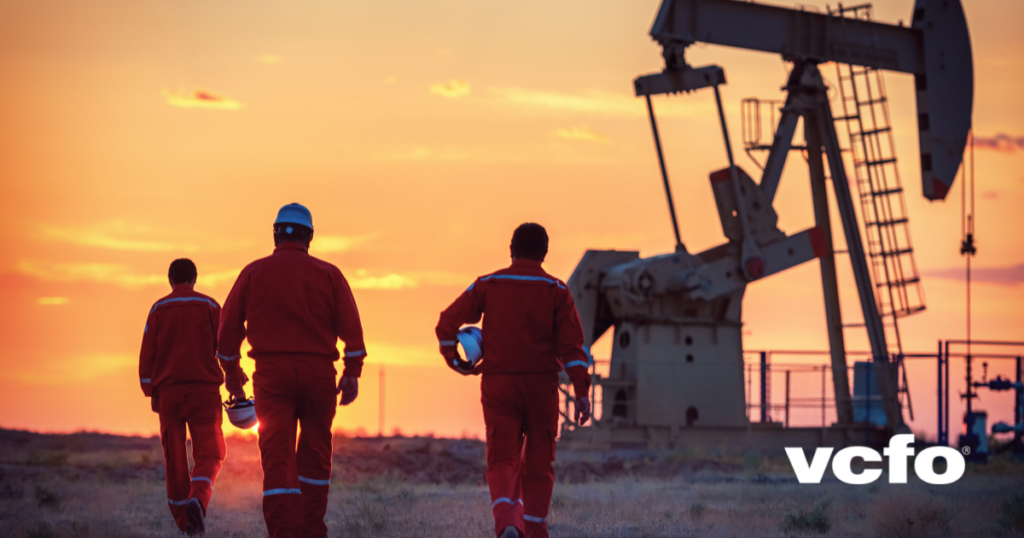Overcoming Labor Shortages in the Oil and Gas Industry
The U.S. oil and gas industry has remained resilient through continued market volatility and tough-to-predict booms and busts – even through the compounding wake of COVID and other recent market disruptions. From 2014-2019, swings in oil prices negatively impacted more than 3,000 exploration, production, and oilfield service jobs in the U.S. Compare that to 2021 when oil and gas (and related chemicals industries) shed more than 100,000 jobs.
While industry analysts project a recovery in 2022 for oil and gas with expectations of a 12.5% expansion, several factors are limiting the ability of producers to open the floodgates on production. One such factor is the difficulty in acquiring and retaining the workforce needed to meet the industry’s demands. Below, we examine the collection of challenges that are contributing to the oil and gas industry’s labor shortage problem.
A Widening Knowledge Gap
The oil and gas industry is among the many being affected by what some have termed the “Great Resignation.” Over the next decade, a high percentage of its workforce at all levels is expected to retire and will take with them an immense amount of industry knowledge that will be difficult to replace.
Compounding this problem are signs that the pipeline sector is narrowing. Graduates in fields like geology and petroleum engineering dropped between 15% and 21% between 2015 and 2019, leaving a deficit of new workforce entrants who could be coached, mentored, and trained. This, among other factors, led the University of Calgary to suspend new admissions to its oil and gas engineering program and is compelling other institutions to rethink their approaches as well.
The Low-Carbon Shift
The demand for renewable energy sources continues to rise. Some historically fossil-focused oil and gas organizations have moved to diversify in that direction, but that too has brought recruitment challenges of its own. Renewable energy by nature demands different talent pools with more advanced technical and math skills to help guide the initiatives. Uptake in Energy Sciences studies is being seen across academia, but more time will be needed for this future talent to make its presence felt in the industry.
Shifting Employee Expectations
Offshore projects and extended mainland on-site work means demanding rotations and significant time spent living on platforms and staff quarters – time that’s also spent away from families and the comforts of home. These rotations and conditions take a hefty toll on older workers, and younger workers are showing less willingness to subject themselves to them. In an interview with Reuters, Patterson-UTI Energy CEO Andy Hendricks noted that “We’re competing against Amazon hiring drivers, or Target with positions in air-conditioned warehouses. It’s easier than a drilling rig in west Texas in the summer.”
A Battle for Budget
Compensation studies and increased wage wars have presented a “run for the worker” mentality within oil and gas organizations. Similar strategies in other industries (like those noted above) limit the net success of this approach. At the same time, departments within individual organizations are also scrambling for more from a budget pie that isn’t getting bigger.
Read Our Recent Post on Capital for Oilfield Services Companies
As departments fight for dollars, HR is expected to do more with less across all the areas they oversee – training, hiring, retention, benefits, bonuses, base, equity, and more. All present significant issues as oil and gas companies must balance the need to maintain an effective workforce with financial constraints.
When companies are trying to save every dollar, HR must look to creativity and innovation to compete, as well as find niche areas where they can establish a competitive advantage or key selling point – prioritizing a safety culture, training and developing existing workers, improving evaluation systems, and rethinking benefits models.
A Need to Think Differently
Collectively, these and other workforce impacts raise many important questions for oil and gas companies. How will companies find the workers they need to meet business and consumer demands? How will recruitment efforts need to adjust to broader work model transformations? How can the knowledge gap widened by the loss of increasingly more tenured workers begin to be filled? One thing is for certain – doing what has always been done will not yield the desired results.
Securing the talent needed to meet energy demands will require oil and gas leaders to think and act in new ways. This includes initiatives like diversity, equity, and inclusion – especially given that women account for less than 25% of oil and gas industry employees (as of 2020). It also includes a new emphasis on risk management on several fronts, such as recognizing and acting on concerns about climate change and mitigating cyber and other security issues with the right systems and expertise.
For oil and gas organizations, the next several years will present significant challenges but also significant opportunities. Those that take a proactive and innovative approach to attract and retain top talent will put themselves in a strong position for sustained success.
—
Need assistance with attracting and retaining top talent in your oil and gas company? Request a Free Consultation from a vcfo expert who can help. We’ve partnered with more than 5,000 businesses in our 25 years and would love to share our expertise and experience with you.


